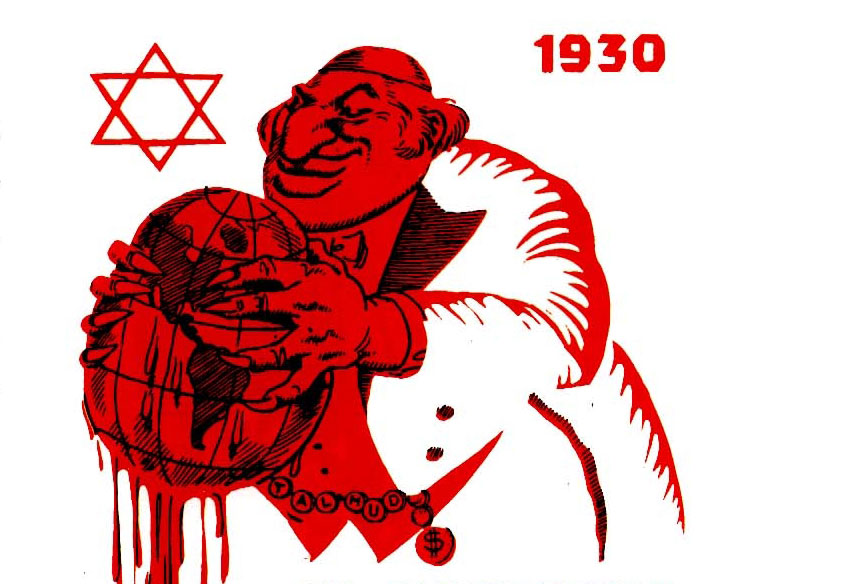
Spanish version of the antisemitic work “The Protocols of the Elders of Zion”
The “Protocols of the Elders of Zion” were authored by the Czarist secret police during the last years of the 19th century, primarily to support the Russian regime’s virulently anti-Semitic policies. They are purported to be the minutes of a secret meeting between Jewish leaders who discussed their attempt to take over the world. Especially during the period straddling World War I, the “Protocols” began to spread far and wide, and in 1920 were even notoriously published by the American industrialist Henry Ford and were front-page news in The Times of London. Several months after they first appeared in The Times, that newspaper declared them to be a forgery. In two court cases in the middle of the 1930s, the “Protocols” were also declared to be a forgery. Nevertheless, around the world, millions believed every word, and the idea that “the Jews” are out to take over the world became and remains a staple of anti-Semitic discourse.
During the Nazi era, the ideas contained in the “Protocols,” now married to the fallacious notion that the Jewish “race” is implicitly dangerous for mankind, were routinely invoked in official anti-Semitic rhetoric and in myriad informal forums. Most historians would concur that the “Protocols” comprise a considerable factor in the thinking that brought Hitler and his partners to persecute the Jews and to their policy of mass systematic murder. There also is no doubt that for a great many people a belief in the veracity of the “Protocols,” to say the least, dampened any nascent impulses to oppose the unfolding Holocaust.
After the facts of the Shoah were brought to light, one would think that a screed like the “Protocols” would have been debunked forever. Yet, it was not. The extreme right continued and continues to espouse the “Protocols,” and in the Muslim and Arab world they are at the core of anti-Semitic discourse. Major television series aired in recent years in Egypt (“Horseman without a Horse”) and Syria, Lebanon and Iran (“Al-Shatat” — The Diaspora) were firmly rooted in the “Protocols.” One can find support for the veracity of the “Protocols” on innumerable websites, blogs and discussion groups in a plethora of languages, and their presence on the web is ubiquitous. It is easy to obtain a copy either over the Internet or in many bookstores around the world.
Despite all of this, many people still consider expressions of belief in the truth of the “Protocols” to exist only on the margins of society. For a long time now this has not been the case, and the reading of a segment of the “Protocols” in a duly elected parliament in a member state of the EU must be taken as a new low. It is not that such a reading will automatically or necessarily result in a new Holocaust, and it would be much too facile to draw a direct line between the two. Nonetheless, the reading of the “Protocols” in the parliament is a highly symbolic act. It clearly demonstrates that the politics of hatred is not only alive and well, but is much too near the mainstream. Real and practical steps must be taken to prevent this kind of politics from gaining even more support, or actually gaining a hold on power. Public pronouncements, the media, laws, and most fundamentally, education, must all be harnessed to the effort to push the kind of hatred represented by the “Protocols of the Elders of Zion” back to the margins and then stamp it out altogether.
This article orginally appeared in The Times of Israel










